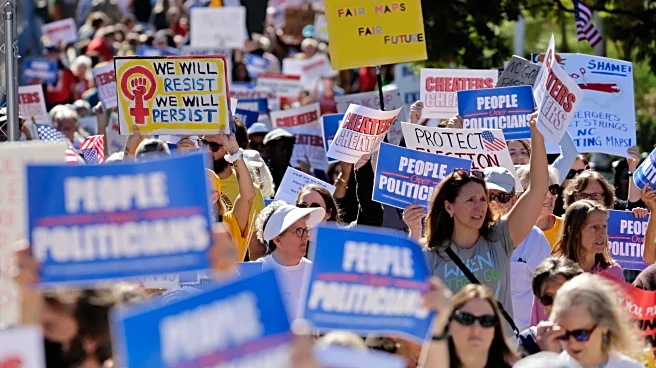What's Happening?
International investors are increasingly purchasing real estate in the United States, with Florida and Texas emerging as the top destinations in the third quarter of the year. According to data from digital
real estate company Waltz, the weak U.S. dollar is a significant factor driving this trend, as it presents a favorable opportunity for foreign buyers. Texas is particularly popular among Mexican investors, who prefer the state due to its cultural ties and large Mexican-American community. Meanwhile, Florida remains a favorite for Canadian and Argentinian buyers. The top ten states attracting international interest include Florida, Texas, New York, Ohio, Georgia, Michigan, Washington, North Carolina, Illinois, and Indiana.
Why It's Important?
The increase in foreign investment in U.S. real estate highlights the global perception of the U.S. as a stable and attractive market, especially during times of economic uncertainty. This trend can have significant implications for the U.S. housing market, potentially driving up demand and prices in key states. For local economies, this influx of foreign capital can lead to increased economic activity and job creation in the real estate and construction sectors. However, it may also contribute to affordability issues for local residents, as foreign buyers often have more purchasing power. The preference for states like Florida and Texas, which do not tax income at the state level, underscores the importance of tax policies in attracting international investment.
What's Next?
As the U.S. dollar's value fluctuates, the trend of foreign investment in U.S. real estate may continue to evolve. If the dollar strengthens, it could dampen foreign interest, while a continued weak dollar might sustain or increase current investment levels. Additionally, changes in U.S. immigration and tax policies could impact the attractiveness of the U.S. real estate market to international buyers. Local governments in popular states may need to address potential housing affordability issues that could arise from increased foreign investment.
Beyond the Headlines
The cultural and economic ties between the U.S. and countries like Mexico and Canada play a crucial role in shaping investment patterns. The preference for border states with significant cultural communities suggests that social factors are as influential as economic ones in investment decisions. Furthermore, the trend of foreign investment in U.S. real estate could lead to increased scrutiny and potential regulatory changes, as policymakers balance the benefits of foreign capital with the need to protect local housing markets.













